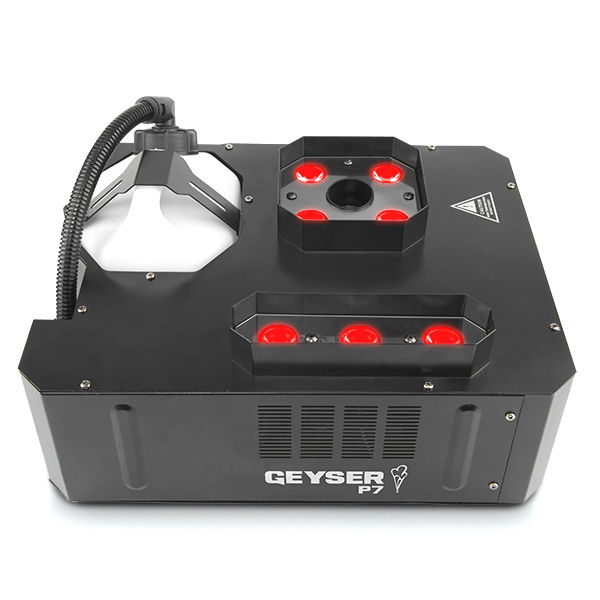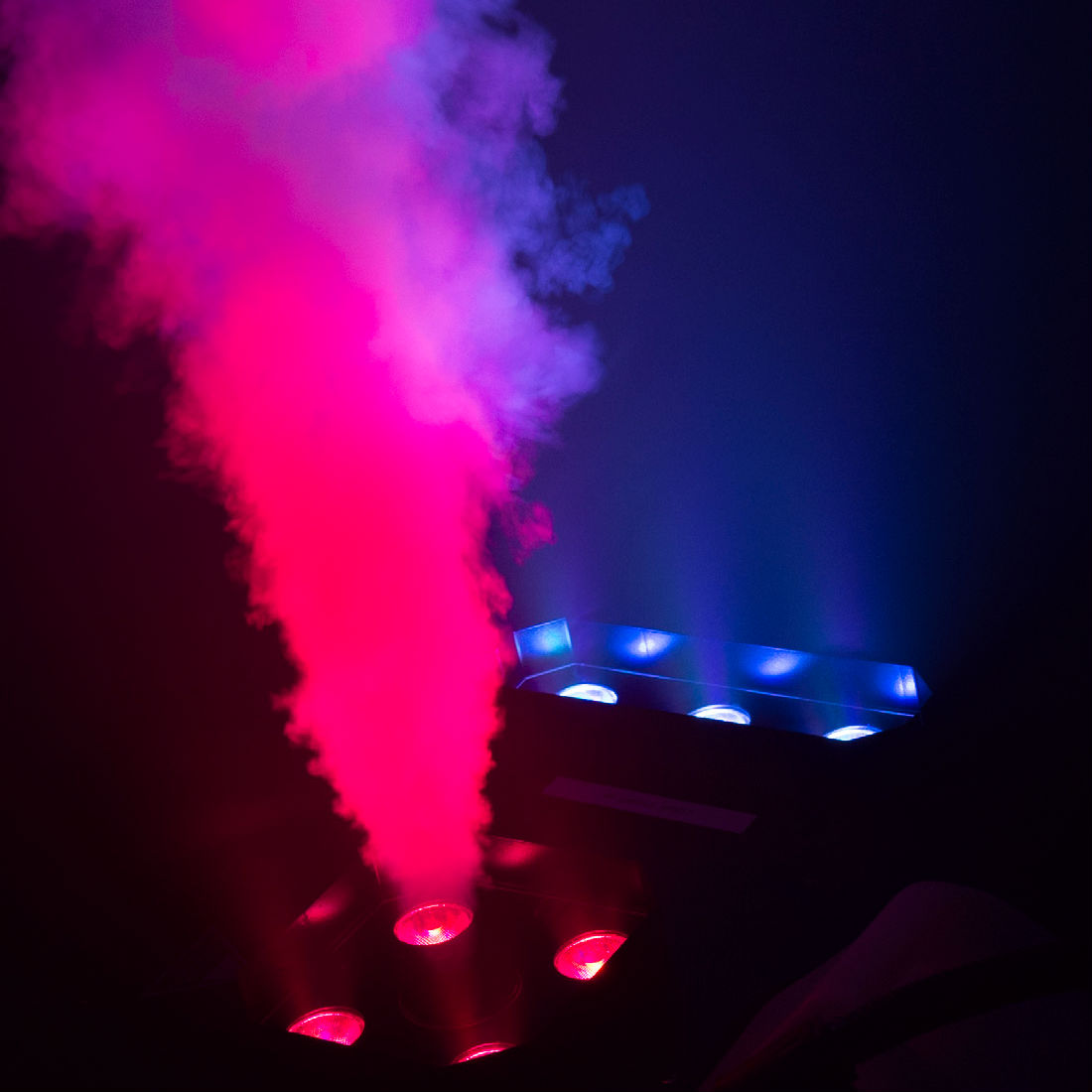Flash Pot Basics
The season of Spring Recitals has arrived, and we at Theatre Effects have had our hands full these past few weeks with orders for all sorts of special effects. In addition to taking orders, we've also been answering lots of questions from people new to using flash pots, some of which I'd like to address this week. I imagine some of our more experienced readers groaning now, and getting ready to click on the next message in their Inbox. To them I say, "Wait just a minute!" Take a look through the topics discussed here, you may be surprised by what you didn't know!
So, what is a flash pot, anyway? Basically, a flash pot is a sturdy container that can hold a pyrotechnic powder, and is usually wired to fire an igniter. The powder can be standard flash powder, colored flash powder, smoke powder, or flame powder. An igniter is just a thin piece of wire (often Nichrome) that will spark when 110 volt current is run across it. Some flash pots are battery-powered and use a glow plug with flash cotton in place of an igniter. In these pots, the glow plug ignites the flash cotton which burns like a fuse into the powder, setting off the effect.
Theatre Effects sells several different types of flash pots. Which of these is the right one for you depends on a few variables. First, if you plan on doing any loud report (aka concussion) effects, or if you want to produce flame columns, you'll need the Color Volcano (#UL01). This pot is sturdier than our other pots, and can handle the force produced by our Sonic Flash Powder. In addition, the extra-long barrel on the Volcano allows you to produce four to six-foot columns of flame when using our Flame Powder. While the Volcano is more expensive than many of our other pots, it's the only one that will do when creating a concussion effect.
If you're just looking to create a few small flash effects, and want to keep your effects budget as low as possible, the Standard Electric Flash Pot (#MU01) may be the answer. The standard electric flash pot uses bare nichrome wires for igniters and can handle most small effects. If, however, you want a somewhat sturdier pot that uses our more reliable Surefire Igniters, you might consider paying a little extra for the Ultra Flash Pot (#UL05).
The Color Volcano, Standard Electric and Ultra flash pots all have one thing in common. To create their effects, they require 110 volts of AC current. This is usually not a problem for performers working in a club or theatre. But what if you don't have access to AC power? What if you're performing outside, or the management at the venue refuses to allow you to plug pyro devices into their house current? It was for situations like these that Theatre Effects developed the Electronic Flash Pot.
The Electronic Flash Pot uses two AA-size batteries to fire the effect. Because there's no need to hook into an outlet, this flash pot can be set up and used almost anywhere. In addition to being a lifesaver to performers stuck without AC power, the Electronic Flash Pot also allows a performer to become creative with the placement of the flash pot. For example, a magician might want to hide a flash pot inside a prop that rolls on stage. With the electronic flash pot this is easy to achieve because the power is on-board, and the controller is a hard-wired footswitch that blends well with the stage floor.
Speaking of controllers, the other flash pots I mentioned will need some sort of switch to control the current to the pot. All of them come equipped with a standard electrical cord, but if you simply load the pot and plug it into the wall it will fire immediately, often tripping the circuit breaker as it does. Therefore, some sort of switch is needed to control power to the effect. I recommend the Ultra 4 Firing Panel or the Ultra 2 Footswitch, but performers who are confident with their electrical skills may decide to create their own. If so, bear in mind that a momentary switch (a switch that only allows current to pass while the switch is being held down) will help prevent accidentally tripping a breaker.
Choosing the right powder for your flash pot is a somewhat easier process. Theatre Effects carries Flash Powder (in white, red and green), Smoke Powder (in a rainbow of colors), Flame Powder and Sonic Flash Powder. We also carry color additives for the Flame Powder, and Sparkle Additive for the Flash Powder. The powder you choose really depends on what look you want to create. A few basic hints
For an instantaneous effect (e.g. a magical appearance) you want to use flash powder. If you want to add a little "magic" to the effect, a very light dusting of Sparkle Additive will do the trick. I've found that as little as an eighth of a teaspoon will create all the sparks I need.
For a slower effect that produces thick clouds of colored smoke, choose smoke powder. Please make sure that your space has adequate ventilation, however, since you you don't want your audience coughing through the rest of your show! Smoke powder works best if you wrap it in a piece of flash paper or slow cotton to provide a longer lasting source of ignition.
Now that you've chosen a pot and some powder, it's time to put it to use! For you beginners (and studious veterans) I have a few tips that will help ensure the success of your effect
First, don't leave the special effects for the last minute. Too often, directors get caught up in the details of rehearsals and don't even consider adding effects until the show is "just right." If you don't leave time to practice with a special effect, it will not look as good as it could, and it may even become a hazard on stage! As a rule of thumb, I try to have special effects ready for rehearsals by about a week before the show opens.
If you're using a flash pot with an off-stage controller, make sure that the operator can clearly see the flash pot from his position. If your operator can't see the pot, he can't tell if a performer is standing too close to the effect. In general, there should always be a ten-foot radius around the flash-pot that is free of performers. Be sure to give the operator final authority on whether or not to fire.
Plan your effect as carefully as possible! Try to imagine everything that will be happening on stage when you want to use the effect, and then ask yourself whether anything could interfere with the effect, or pose a safety risk. When planning the position of the flash pots, make sure that they are not located in a high-traffic area -- the last thing you need is an actor kicking your flash pot up against the back curtain!
Finally, as the hippie allegedly said to a man looking for Carnegie Hall, "practice, man, practice!" If you've ordered your effects in a timely manner, you should be able to have at least three rehearsals with the effect in place. These rehearsals are vital to work out any bugs in placement or powder loads, and to get the actors comfortable working with the effect. My rule of thumb here is that if an effect isn't in place at the beginning of "tech week", it doesn't go in the show.
I've tried to offer a "crash course" in choosing and using flash pots here, but I know there are probably questions I've left unanswered. So, my final piece of advice is this, don't be afraid to ask for advice! As many a teacher has reminded me, "the only stupid question is the one you didn't ask."
*********************************************
Theatre Effects Customer Service Department
service@theatrefx.com
www.theatrefx.com
Theatre Effects, 1810 Airport Exchange Blvd. #400, Erlanger, KY 41018
Phone: 1-800-791-7646 or 513-772-7646 Fax: 513-772-3579









